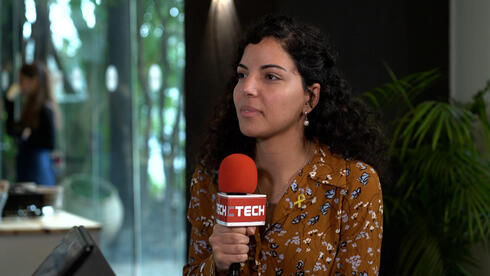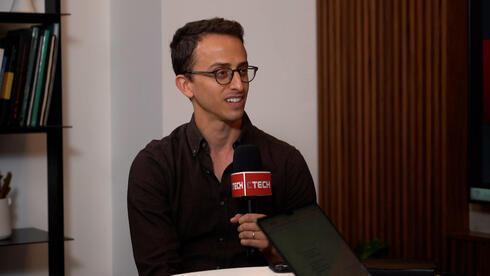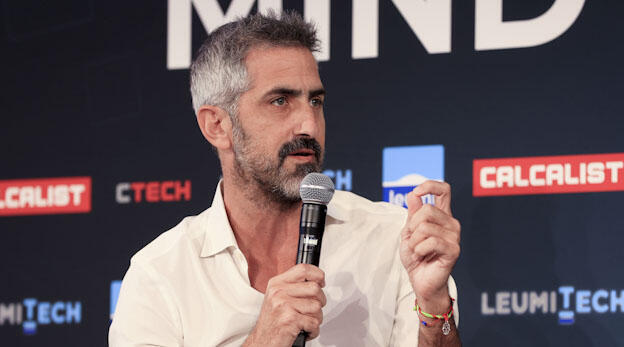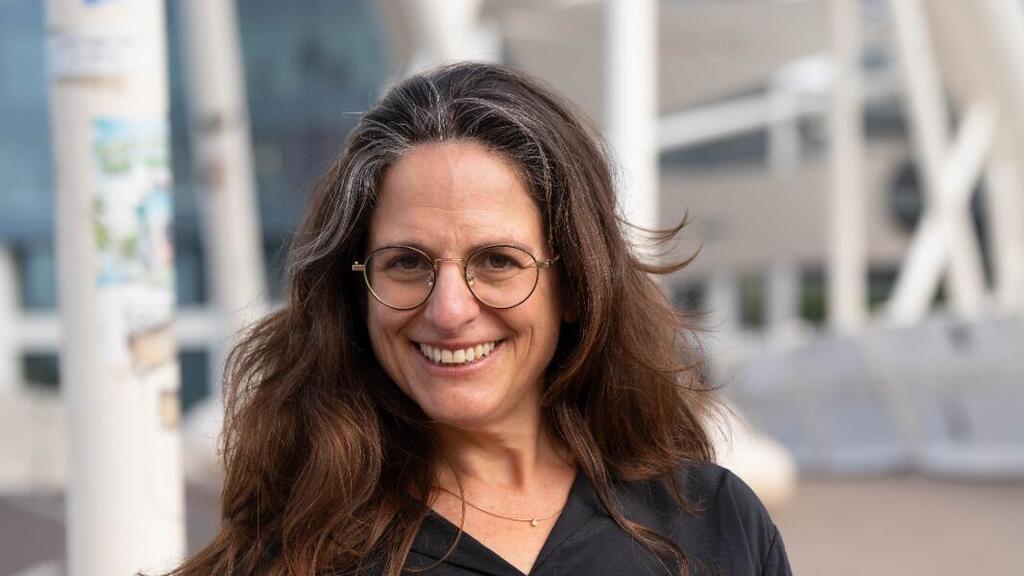
HR in the AI Era
For Evinced, the AI revolution “is cultural, strategic, and deeply human”
VP of HR Maya Blanc joined CTech to discuss the ways the company adopts AI to encourage learning, experimentation, and innovation.
“The AI revolution is significantly impacting every corner of our organization, and we embrace it wholeheartedly,” said Evinced VP of HR Maya Blanc. “This shift isn’t just technological; it’s cultural, strategic, and deeply human.”
Blanc joined CTech as part of its new series, HR in the AI Era, which explores artificial intelligence's impact on the workplace. “The pace of change is incredibly fast, and with it comes uncertainty, ambiguity, and an ever-present sense of FOMO — especially in high-tech environments like ours,” she added.
You can read the entire interview below.
Company name: Evinced
Name and title: Maya Blanc, VP of HR
Names of founders and upper management: Co-Founders Navin Thadani (CEO) and Gal Moav (CTO)
Year of founding: 2018
Investment stage: C
Total investment to date: $112M
Field of activity: AI-driven accessibility
Number of employees: 130
Office location: Tel Aviv
Number of open positions: 15-20
On a scale of 1-10, how much does the AI revolution disrupt your company operation in general, and the HR department specifically?
Without a doubt — a solid 10.
The AI revolution is significantly impacting every corner of our organization, and we embrace it wholeheartedly. This shift isn’t just technological; it’s cultural, strategic, and deeply human. The pace of change is incredibly fast, and with it comes uncertainty, ambiguity, and an ever-present sense of FOMO — especially in high-tech environments like ours.
But disuption doesn’t have to be chaotic. At our company, we view this revolution as an opportunity to lead, not just adapt. One of our core missions is to create a work environment that encourages learning, experimentation, and innovation — where engineers can play, build, and grow alongside state-of-the-art AI tools and frameworks.
That said, the real challenge is not only to embrace this change but to lead it in a way that is responsible, inclusive, and effective. We are deeply committed to ensuring that AI doesn't widen gaps, but rather opens doors. This means investing in education, supporting diverse teams, and ensuring every employee feels empowered, not left behind.
In HR specifically, our role has transformed into that of transformation enablers. We’re not just hiring talent, we’re shaping the cultural readiness and infrastructure needed to adapt to AI-driven development. We’ve moved beyond just adopting tools: We’re fostering a new mindset of curiosity, ownership, and agility across teams.
It’s an incredibly exciting time to join us — especially if you're the kind of engineer who thrives on shaping the future responsibly and with purpose.
What interesting AI tools do you and your staff use in employee management/recruitment?
AI is deeply integrated into our HR operations, especially in sourcing, recruitment, and digital asset creation. Tools like LinkedIn Recruiter with AI enhancements, SparkHire, GoPerfect, and ChatGPT are part of our daily workflows. We use them to write job descriptions, identify passive candidates, personalize outreach, and streamline communication.
However, the transformation we’re going through is not just about tools — it's a cultural and organizational shift. Our company is undergoing a transition to AI-driven development, and HR also plays a role in ensuring the entire team is aligned, motivated, and not overwhelmed by this change. This requires thoughtful change management and a proactive strategy that embraces new ways of thinking.
When you’re building AI products, this mindset shift is foundational. It's not just about “how do we use AI,” but rather “how do we build with AI,” which requires cross-functional understanding and full organizational buy-in.
In which roles or tasks within your company has AI already begun to replace human labor (if at all)?
We’re not focused on replacing human roles at this stage. Our emphasis is on augmenting human capabilities through AI. For instance, in R&D and design, AI accelerates prototyping and testing. In HR, it shortens sourcing cycles and personalizes candidate experiences. The goal is efficiency and innovation, not headcount reduction.
What are the two major challenges you are coping with these days?
First, rapid growth — we’re scaling quickly, and hiring top talent fast enough without compromising on both personal and professional quality is a constant challenge.
Second, AI-driven transformation — placing AI at the core of our product development and operations requires a deep mindset and workflow change across the company. It’s not a side project; it’s a strategic pivot, and HR must be part of this transition.
Have you experienced workforce-related challenges due to the war, and are you still feeling the impact of the security situation on your human resources?
The security situation in Israel has impacted all of us on a personal and organizational level. Despite this, we’ve demonstrated remarkable resilience and growth. Our people have shown deep commitment, flexibility, and unity, proving that our strength truly lies in our collective spirit. This period also reinforced the importance of robust HR practices around empathy, communication, and organizational agility.
Have you made changes to your workforce following the increased use of AI tools, both in terms of headcount and internal shifts between departments?
Rather than shifts in headcount, we’ve seen a transformation in how work gets done. AI tools have enhanced productivity and introduced new skill requirements. For example, developers now collaborate more closely with AI/ML teams, and marketers are leveraging generative AI for content strategy. These shifts require continuous upskilling and interdisciplinary collaboration, which HR supports through training and knowledge sharing.
How does the global market uncertainty affect your workforce, in terms of employee numbers or departmental reallocations? Are you scaling your workforce up or down in different regions around the world?
Despite the global uncertainty, we’re in a growth phase. The field of digital accessibility, which we lead in, is gaining international traction, and that momentum allows us to expand across multiple functions and geographies. Our technological edge gives us a competitive advantage even in volatile markets, helping us attract top talent globally.
Do you estimate that in 2025–2026 you will increase or decrease the number of personnel? Explain why.
We anticipate continued growth through 2025 and 2026. The demand for inclusive, accessible, and AI-enhanced digital experiences is rising globally. To maintain our technological excellence and support our expansion, we’re investing in talent acquisition, particularly in AI, data science, and engineering.













